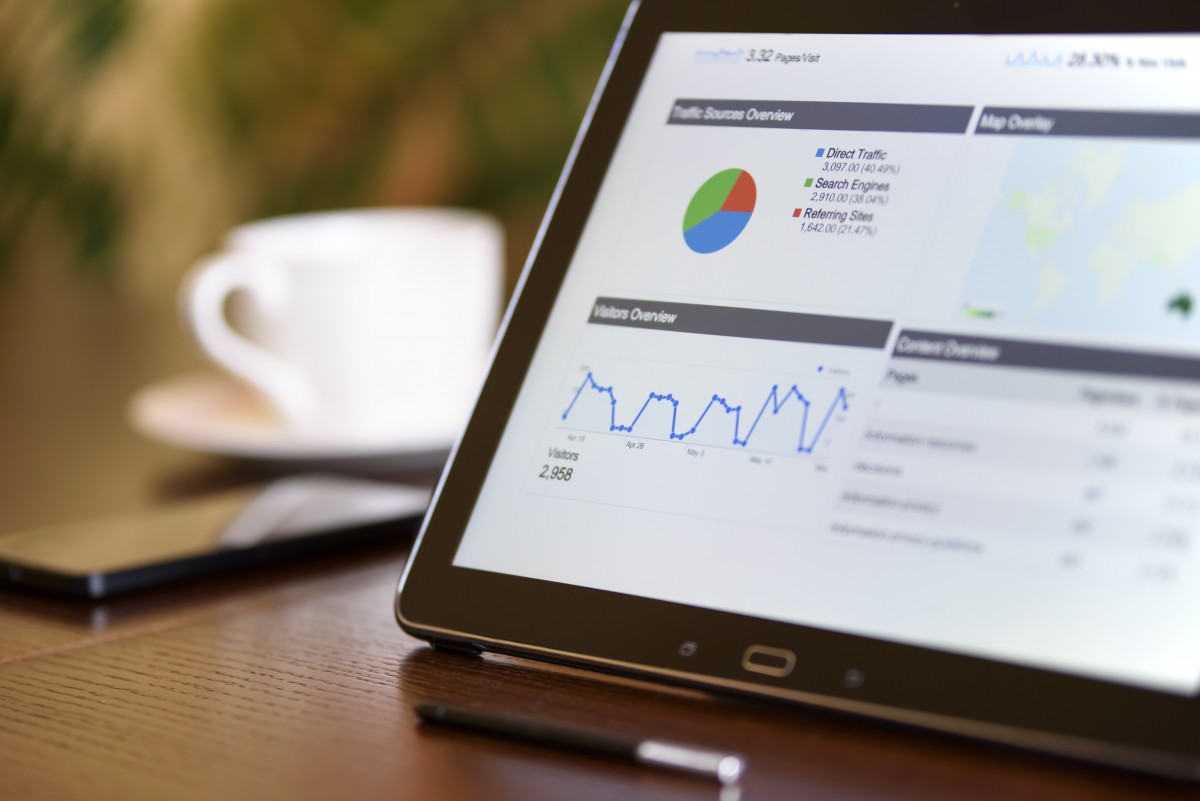The landscape of Digital Marketing is undergoing its most profound transformation since the advent of social media. Driven by exponential advances in Artificial Intelligence (AI), the deprecation of third-party cookies, and surging consumer demand for hyper-personalized experiences, marketers are navigating completely new horizons. The era of broad, mass-market digital campaigns is fading, replaced by a mandate for precision, contextual relevance, and genuine, data-driven customer engagement. For businesses seeking sustainable growth and high Google AdSense revenue, understanding and mastering these emerging trends is crucial to maintaining SEO competitiveness and securing market leadership. This comprehensive guide provides an in-depth exploration of the technologies, strategies, and paradigm shifts defining the next evolution of digital marketing.
1. The Apex of Personalization: From Segmentation to Uniqueness
The primary trend reshaping the digital marketing world is the move from simple audience segmentation to real-time, predictive hyper-personalization. Customers no longer tolerate generic content; they expect brands to anticipate their needs and deliver tailored experiences across every single touchpoint.
A. The Generative AI (GenAI) Catalyst
GenAI is the engine powering this personalization surge. Unlike previous AI models used for basic automation, GenAI can create entirely new, context-aware content instantaneously. A. Dynamic Creative Optimization (DCO) at Scale: GenAI allows marketers to produce thousands of unique ad creatives (copy, images, headlines) instantly, matching them perfectly to individual user profiles, browsing history, and real-time context. This ensures that the advertisement a user sees is highly relevant, boosting click-through rates (CTR) and conversion. B. Hyper-Personalized Content Generation: For content marketing, GenAI drafts, summarizes, and localizes articles, emails, and social media posts, maintaining brand voice while speaking directly to the micro-segment’s pain points and interests. This significantly improves engagement metrics, which indirectly benefits SEO. C. Conversational Marketing Agents: AI-powered chatbots now leverage Large Language Models (LLMs) to provide human-like, multi-turn conversational support, guiding users through the purchasing funnel, answering complex queries, and even recommending products based on nuanced verbal input.
B. Leveraging First-Party Data for Precision
With global privacy changes and the sunsetting of third-party cookies, relying on internal, direct customer data (first-party data) is no longer optional—it is the foundation of effective marketing. A. Customer Data Platforms (CDPs): CDPs are becoming the indispensable operational hub, unifying fragmented customer data from sales, service, and marketing systems into a single, cohesive view. This “Golden Record” enables truly synchronized, cross-channel personalization. B. Predictive Analytics for Customer Lifetime Value (CLV): AI models analyze first-party transactional and behavioral data to predict the future value and churn risk of individual customers. Marketers can then allocate budget and effort to nurture the most valuable customers and proactively re-engage those at risk. C. Ethical Data Transparency: The shift demands that brands be transparent about what data they collect and how they use it. Building a trusting relationship centered on explicit consent is now a competitive advantage, turning privacy compliance into a positive brand differentiator.
2. The Search Revolution: SEO in the Age of AI Overviews
Search Engine Optimization (SEO) remains the backbone of organic digital traffic, but the nature of optimization has fundamentally changed. Search engines, particularly Google, are integrating AI to deliver direct answers and conversational results through features like AI Overviews (or Search Generative Experience).
A. Optimization for Generative Experience (GEO)
The goal is no longer just to rank #1 in the traditional blue links, but to be the source that AI features reference and cite. A. Semantic Depth and Authority: Content must be comprehensive, authoritative, and answer the full spectrum of user queries around a topic, often requiring the word count depth favored by AI models. This establishes the page as the ultimate topical source. B. Structured Data and Knowledge Graphs: Marketers must aggressively utilize Schema Markup (Structured Data) to explicitly define entities, relationships, and facts on the page. This makes the content easily ingestible and verifiable by AI models for inclusion in generative summaries. C. Question-Answer Optimization: SEO strategy must pivot toward explicitly addressing common and complex user questions within content, mirroring the conversational format of AI-driven search results. Using clear H2/H3 headings for FAQs is essential.

B. Multimodal Search and Beyond
Search is moving beyond text to incorporate visual and auditory inputs, requiring marketers to optimize content for these new modalities. A. Visual Search Optimization: All images must be optimized with detailed, descriptive Alt Text and file names to be found by visual search tools (like Google Lens). Product data and imagery should be perfectly aligned. B. Voice Search Optimization: Optimizing for voice requires focusing on natural, long-tail conversational keywords and ensuring local business information (via Google Business Profile) is impeccable, as many voice searches are local in nature. C. AI as an Audience: Marketers must view the AI model itself as an audience, optimizing content not only for human readers but also for machine learning algorithms that crawl and synthesize information.
3. The Omnichannel Mandate: Seamless Customer Journeys
In today’s ecosystem, a customer journey rarely follows a straight line; it often involves jumping between social media, websites, physical stores, and mobile apps. Omnichannel marketing is the daily operational necessity for consistency.
A. Synchronizing the Digital and Physical World (Phygital)
A. Location-Based Marketing (Geo-Fencing): Utilizing mobile data and Geo-fencing technology, brands can deliver hyper-relevant messages to customers who are physically near a retail location or a competitor’s store, closing the loop between digital engagement and in-store purchase. B. Augmented Reality (AR) Experiences: AR allows customers to “try on” products virtually (e.g., clothing, furniture) through a mobile app or website overlay. This reduces friction, increases confidence, and significantly lowers return rates. C. Unified Inventory and Fulfillment: True omnichannel requires a back-end system that provides a single view of inventory, enabling customers to buy online and pick up in store (BOPIS) or return a product purchased on the app at a physical location.
B. The Rise of Retail Media Networks (RMNs)
RMNs are emerging as powerful new advertising channels. A. Walled Gardens of Commerce: Retailers (like Amazon, Walmart, or major grocery chains) are monetizing their massive first-party data by allowing brands to advertise directly to their shoppers, both on their e-commerce sites and through off-site programmatic channels. B. Precision Ad Targeting: For brands, RMNs offer an opportunity to target high-intent audiences based on precise, verified purchase history, making advertising dollars dramatically more effective than broad programmatic advertising. C. New Revenue Streams: For retailers, RMNs are a lucrative new profit center, compelling them to invest heavily in their data and technology infrastructure.
4. Measuring the New Metrics: Attribution and Trust
The traditional metrics of digital marketing (e.g., last-click attribution) are insufficient for measuring complex, non-linear omnichannel journeys. New metrics centered on customer value and privacy are taking precedence.
A. Holistic Attribution Models
A. Multi-Touch Attribution (MTA): Instead of crediting the final click, MTA models use AI and data science to allocate credit across every touchpoint a customer had before converting (e.g., social ad, blog post, email, store visit), providing a more accurate picture of channel ROI. B. Incrementality Testing: Marketers are increasingly relying on controlled experiments to measure the true incremental lift provided by a campaign, rather than just raw conversion numbers, ensuring that budget is spent on activities that truly drive new business. C. Marketing Mix Modeling (MMM) with AI: AI-driven MMM uses historical data to understand the impact of both digital and offline factors (e.g., weather, economic shifts, traditional TV ads) on sales, allowing for optimal budget distribution.
B. The Ethical Imperative and Trust
A. AI Governance in Marketing: Companies must establish clear rules for how AI is used in creative and targeting processes to avoid generating content that is biased, offensive, or non-compliant. Ethical AI is becoming a legal and brand requirement. B. Privacy-Enhancing Technologies (PETs): PETs, such as differential privacy and federated learning, allow marketers to analyze aggregate customer data and gain insights without ever accessing or exposing individual user data, balancing personalization with privacy. C. Accessibility Compliance: Digital content, including websites and video, must be optimized for accessibility (e.g., alt text for screen readers, accurate captions) not only for compliance with global regulations but as a core component of inclusive design and brand trust.
The digital marketing landscape is rapidly evolving into a complex, intelligent ecosystem where success hinges on the fusion of data science and creative intuition. The new horizons demand marketers shift their focus from mere execution to sophisticated, AI-augmented strategy, prioritizing privacy, personalized experience, and verifiable, holistic performance measurement. Those who embrace these changes will not just survive the current disruption—they will own the future of customer relationships and market growth.







